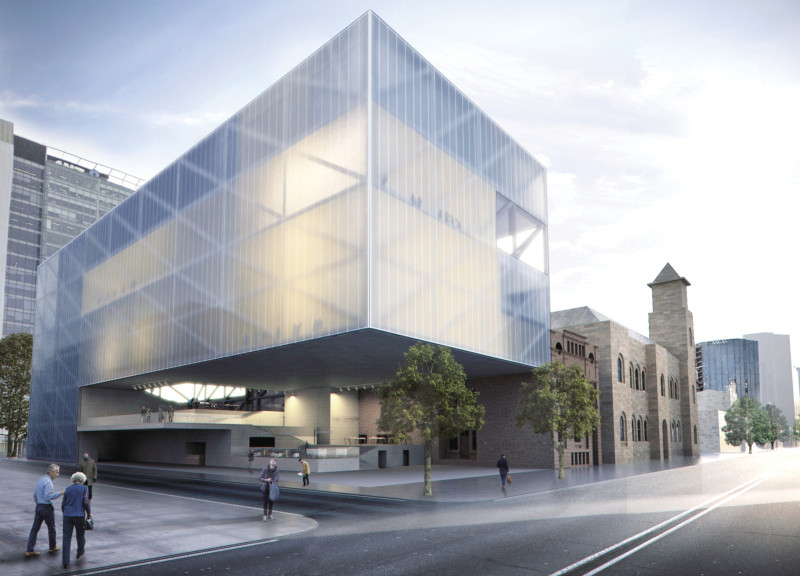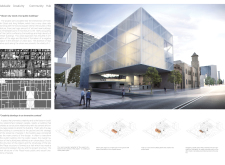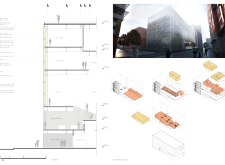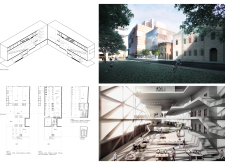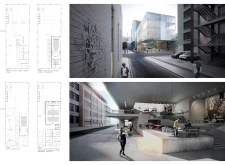5 key facts about this project
Significant elements of the project include an open floor plan that facilitates natural flow and connectivity among different areas within the structure. Large windows and strategic placement of entrances maximize daylight penetration, promoting energy efficiency and enhancing the overall ambiance. The exterior of the building features a combination of textured facade materials, creating visual interest while grounding the design in its landscape. The careful selection of finishes underscores the project’s ethos of sustainability, with a focus on low-impact materials that are both durable and aesthetically pleasing.
Subtitle 2 - Innovative Use of Space and Light
The project distinguishes itself through its innovative spatial arrangement and thoughtful use of light. Each area serves distinct functions, yet they are interconnected through a central atrium that acts as a focal point. This atrium not only provides a communal gathering space but also maximizes verticality, drawing the eye upward and enhancing the perception of space. The thoughtful incorporation of skylights further accentuates this effect, allowing natural light to infiltrate deep into the interior spaces.
The building’s design also addresses acoustic considerations, utilizing materials that minimize sound transmission between rooms. This attention to detail fosters an environment conducive to both collaboration and concentration, catering to a diverse range of activities. The blend of private and communal areas exemplifies a user-centered approach, responding to the needs of the occupants while promoting interaction and engagement.
Subtitle 3 - Material Selection and Sustainability
Materiality plays a pivotal role in this project, with a focus on sustainability and low environmental impact. The use of reclaimed wood, recycled metal, and low-VOC finishes signals a commitment to environmentally responsible practices. This selection not only contributes to the building's aesthetic but also ensures longevity and ease of maintenance.
The integration of green roofs and walls further enhances the project’s sustainable credentials, providing insulation and reducing urban heat island effects. These features encourage biodiversity and facilitate stormwater management, exemplifying how architecture can contribute positively to the urban ecosystem.
The design of this project serves as a case study in modern architectural thought, illustrating how thoughtful design decisions can harmonize with operational functionality. Exploration of the architectural plans and sections will reveal deeper insights into the integration of space, light, and material choices as key elements of the overall design philosophy. Engage with the project presentation to discover further architectural ideas and details that encapsulate its unique identity.


